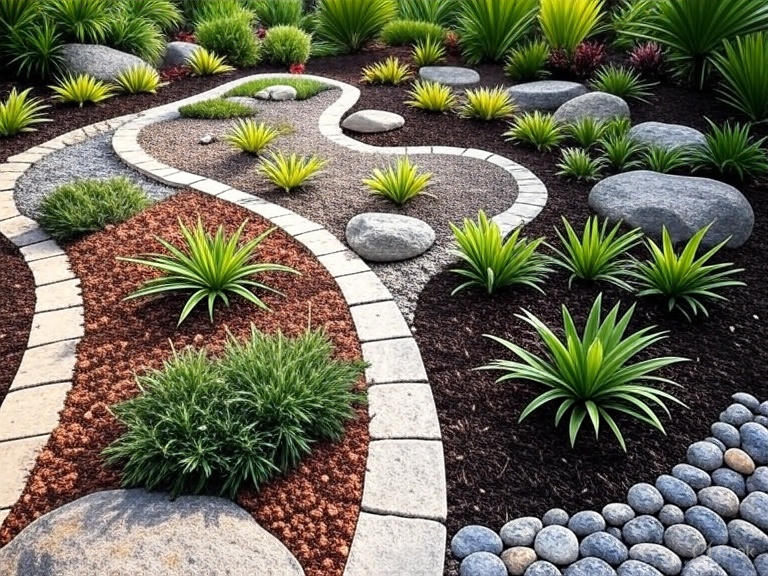
October 01, 2025 - Zed van der Vyver
Introduction to Landscaping in Thailand
Landscaping in Thailand transforms outdoor spaces into functional and beautiful areas, tailored to the country’s tropical climate. With year-round warmth, seasonal monsoons, and rich biodiversity, landscaping goes beyond aesthetics—it’s a practical solution for homes and properties. This blog will explain why landscaping matters in Thailand, the different types for various needs, how they are created, and what they might cost. No landscaping expertise required—just clear info to help you enhance your space!
Why Landscaping Is Essential in Thailand
Landscaping serves multiple purposes in Thailand’s unique environment. It reduces heat in urban areas like Bangkok, where temperatures often exceed 35°C, by adding shade and greenery. It manages water runoff during heavy monsoon rains, a key concern in flood-prone regions like Ayutthaya. Additionally, it boosts property value, provides privacy with natural barriers, and supports local wildlife, such as birds and butterflies. Whether in a rural Chiang Rai village or a Phuket resort, landscaping improves air quality, reduces erosion, and creates a welcoming outdoor area.
Types of Landscaping for Different Scenarios in Thailand
Landscaping varies by purpose and location, and the best type depends on your space and climate. Here’s a look at common types in Thailand and where they fit best:
Xeriscaping
Use: Dry or low-maintenance areas.
Why: Uses drought-tolerant plants like succulents and gravel, minimizing water use during Thailand’s dry season. Ideal for urban settings.
Example Scenario: A rooftop garden in Nonthaburi.
Tropical Landscape Design
Use: Residential yards or resorts.
Why: Features lush plants like palms and hibiscus, thriving in Thailand’s humidity. It enhances beauty and provides shade.
Example Scenario: A villa in Krabi.
Rain Garden Landscaping
Use: Flood-prone or low-lying areas.
Why: Designed with native plants and shallow basins to absorb monsoon runoff, reducing flooding risks.
Example Scenario: A home in Ayutthaya.
Hardscape Gardens
Use: Patios or urban spaces.
Why: Combines stone paths, decks, and minimal plants, offering durability and low upkeep in humid climates.
Example Scenario: A condo terrace in Bangkok.
Your choice depends on your site’s drainage, water access, and aesthetic goals. Local nurseries and landscapers like Siam Garden World provide tailored options.
How Landscaping Is Created in Thailand
Landscaping in Thailand involves adapting to the tropical climate while meeting functional and decorative needs. Here’s a general overview of the process:
- Site Assessment: Evaluate soil type, drainage, and sunlight, considering monsoon impacts in low areas like the Central Plains.
- Planning and Design: A layout is drawn, factoring in plant placement and hardscape elements like paths or retaining walls.
- Soil Prep: Soil is amended with compost or sand for drainage. Raised areas or basins are built for rain gardens using local materials.
- Installation: Plants (e.g., banana trees, lotus) are planted, timed with the rainy season (May–October). Hardscapes like stone or concrete are laid with proper leveling.
- Maintenance: Irrigation systems (drip or manual) are set up, with regular pruning and mulching to manage Thailand’s heat and humidity.
Rural areas often use traditional methods with local plants, while urban projects in Bangkok employ professional landscapers and imported materials.
Cost Comparison of Landscaping in Thailand
Landscaping costs in Thailand vary by type, size, and materials. Here’s a breakdown (in Thai Baht per square meter, as of October 2025):
| Landscaping Type | Cost (THB per sqm) | Typical Use | Notes |
|---|---|---|---|
| Xeriscaping | 400–1,200 | Dry areas | Low water needs; gravel adds cost. |
| Tropical Landscape | 500–1,500 | Residential yards | Plant variety and labor increase price. |
| Rain Garden | 600–1,800 | Flood zones | Includes basin work; soil prep adds cost. |
| Hardscape | 800–2,000 | Urban spaces | Stone or concrete drives expense. |
Example Calculation: A 20 sqm tropical landscape might cost 10,000–30,000 THB, while a hardscape of the same size could be 16,000–40,000 THB. Initial setup includes tools (1,000–3,000 THB), with ongoing costs for water and maintenance. Prices are up 10–15% since 2020 due to material and labor increases.
Final Thoughts
Landscaping in Thailand enhances your property’s beauty, manages the tropical climate, and adds practical value. Whether you’re creating a xeriscape in the city or a rain garden in a flood zone, there’s a type for every need. Consider your site’s conditions, water availability, and budget, and consult local experts for the best plants and designs. Landscaping turns your outdoor space into a functional haven. Got questions? Leave a comment—we’re here to help!
